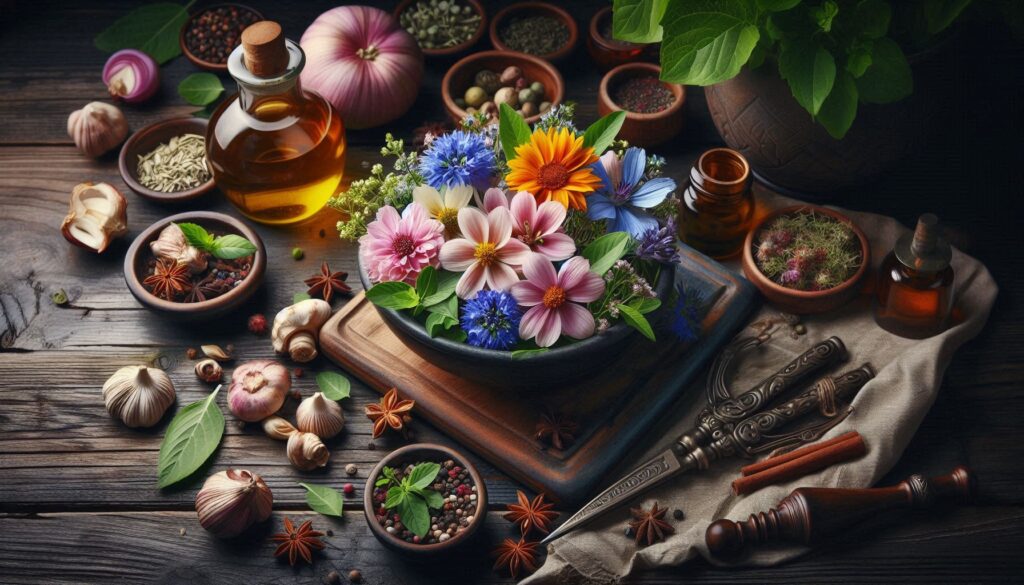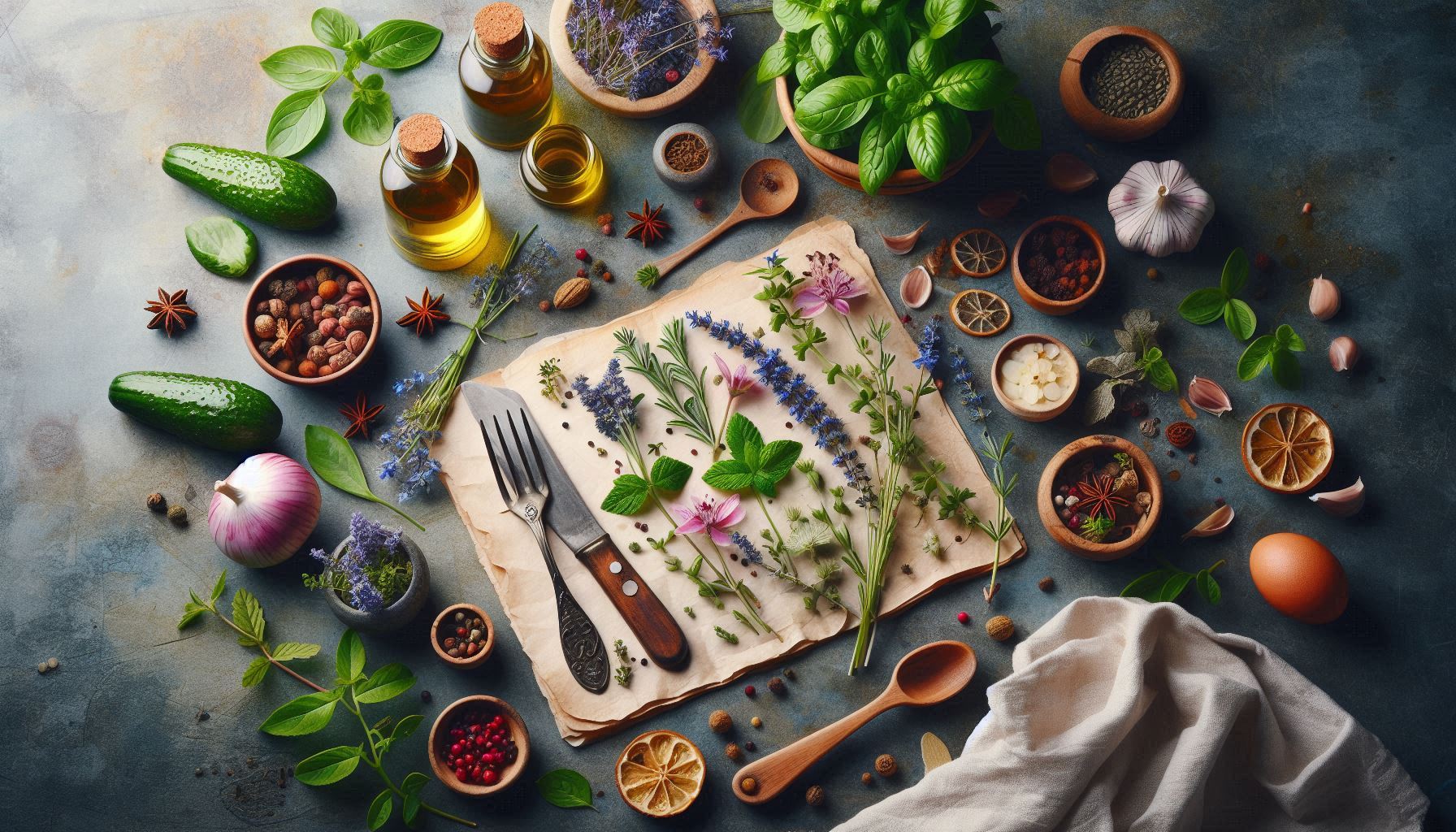In the realm of culinary arts, herbs and edible flowers serve as aromatic and visually appealing ingredients that elevate dishes from ordinary to extraordinary. Whether used as garnishes, flavor enhancers, or central ingredients, these natural elements bring freshness, complexity, and a touch of elegance to culinary creations. This article delves into the world of herbs and edible flowers, exploring their diverse flavors, nutritional benefits, culinary uses, growing tips, and the cultural significance that has shaped their role in global cuisine.
Introduction to Herbs and Edible Flowers
Herbs and edible flowers have been integral to culinary traditions for centuries, prized for their aromatic qualities, distinctive flavors, and medicinal properties. While herbs add depth and nuance to savory and sweet dishes alike, edible flowers bring vibrant colors and delicate flavors that enhance both taste and presentation. From ancient civilizations to modern kitchens, these botanical treasures continue to inspire chefs, home cooks, and food enthusiasts around the world.
The Rich Diversity of Herbs
1. Popular Culinary Herbs:
Culinary herbs encompass a wide range of plants, each prized for its unique flavor profile and culinary versatility. Some of the most popular culinary herbs include:
- Basil: Known for its sweet, slightly peppery flavor with hints of clove and citrus. Varieties include sweet basil, Thai basil, and purple basil.
- Parsley: Adds a fresh, grassy flavor with a hint of bitterness. Both flat-leaf (Italian) and curly-leaf varieties are commonly used in cooking.
- Rosemary: Offers a robust, pine-like aroma and flavor that pairs well with roasted meats, potatoes, and bread.
- Thyme: Provides a subtle, earthy flavor with hints of lemon and mint. Commonly used in soups, stews, and marinades.
- Mint: Refreshing and aromatic, with varieties such as spearmint and peppermint used in beverages, salads, and desserts.
- Cilantro (Coriander): Offers a citrusy, slightly peppery flavor. The leaves (cilantro) and seeds (coriander) are used in various cuisines, from Mexican to Indian.
- Chives: Delicate onion-like flavor, commonly used as a garnish or in creamy sauces.
2. Culinary Uses of Herbs:
Herbs can be used fresh or dried, whole or chopped, to impart flavor, aroma, and visual appeal to dishes. They are essential in:
- Seasoning: Enhancing the taste of meats, vegetables, soups, and sauces.
- Garnishing: Adding a finishing touch to dishes with chopped herbs sprinkled on top.
- Infusions: Steeping in liquids (e.g., oils, vinegars) to extract flavors for dressings or marinades.
- Baking: Incorporating into bread, pastries, and desserts for added complexity.
Exploring the World of Edible Flowers
1. Common Edible Flowers:
Edible flowers not only add color and visual appeal but also contribute subtle flavors and textures to culinary creations. Popular edible flowers include:
- Nasturtiums: Peppery flavor, available in vibrant orange, yellow, and red hues.
- Calendula (Marigold): Mild, tangy flavor with bright yellow or orange petals.
- Lavender: Floral and slightly sweet, used in desserts, teas, and infusions.
- Violas and Pansies: Delicate flavors with a range of colors from purple and yellow to white.
- Chive Blossoms: Mild onion flavor, used fresh in salads or as a garnish.
- Borage: Cucumber-like taste, often used in cocktails, salads, and desserts.
- Roses: Floral and sweet, ideal for desserts, jams, and infused beverages.
2. Culinary Uses of Edible Flowers:
Edible flowers are prized for their ornamental value and delicate flavors, enhancing dishes in various ways:
- Salads: Adding color and texture to fresh green salads or fruit salads.
- Desserts: Decorating cakes, pastries, and chocolates with edible petals or crystallized flowers.
- Beverages: Infusing into teas, lemonades, or cocktails for a floral twist.
- Savory Dishes: Incorporating into soups, sauces, and seafood dishes for visual appeal.

Growing and Harvesting Herbs and Edible Flowers
1. Herb Gardens:
Herbs thrive in well-drained soil with adequate sunlight. Tips for growing herbs include:
- Container Gardening: Growing herbs in pots or containers on balconies, windowsills, or outdoor gardens.
- Companion Planting: Pairing herbs with compatible vegetables to enhance growth and repel pests naturally.
- Harvesting: Pruning herbs regularly to promote growth and using fresh or drying them for long-term storage.
2. Edible Flower Cultivation:
Edible flowers require similar growing conditions to herbs, with considerations for:
- Soil Preparation: Using nutrient-rich soil with good drainage to promote healthy root development.
- Watering: Providing regular watering while avoiding waterlogged conditions.
- Pollination: Encouraging pollinators such as bees and butterflies to enhance flower production.
Nutritional and Health Benefits
1. Nutritional Value:
Herbs and edible flowers are rich in vitamins, minerals, and antioxidants, contributing to overall health and well-being:
- Antioxidants: Protect cells from damage caused by free radicals.
- Vitamins: Provide essential nutrients such as vitamin C, vitamin A, and vitamin K.
- Minerals: Include calcium, potassium, and iron necessary for various bodily functions.
2. Medicinal Uses:
Many herbs have medicinal properties and have been used in traditional medicine for centuries:
- Digestive Health: Mint, ginger, and fennel aid digestion and alleviate gastrointestinal discomfort.
- Anti-inflammatory: Turmeric and ginger have anti-inflammatory properties that may reduce inflammation.
- Stress Relief: Lavender and chamomile promote relaxation and improve sleep quality.
Cultural Significance and Global Influence
1. Herbs in Traditional Cuisine:
Herbs play a pivotal role in defining the flavors and culinary identities of various cuisines worldwide:
- Mediterranean Cuisine: Basil, oregano, and thyme are staples in Italian and Greek dishes.
- Asian Cuisine: Cilantro, lemongrass, and Thai basil are essential in Thai, Vietnamese, and Indian cuisines.
- Latin American Cuisine: Cilantro, parsley, and epazote feature prominently in Mexican and South American dishes.
2. Edible Flowers in Cultural Practices:
Edible flowers have cultural significance as symbols of beauty, celebration, and culinary artistry:
- Festivals and Ceremonies: Flowers such as roses and marigolds are used in religious ceremonies, weddings, and festivals.
- Decorative Arts: Floral arrangements and edible flower displays showcase artistic expression and cultural heritage.
Sustainable Practices and Culinary Trends
1. Farm-to-Table Movement:
Emphasizes locally sourced, seasonal ingredients, including fresh herbs and edible flowers grown sustainably without synthetic pesticides or herbicides.
2. Urban Agriculture:
Community gardens, rooftop farms, and hydroponic systems promote food security, environmental stewardship, and educational outreach.
3. Plant-Based Cuisine:
Increasing demand for plant-based diets encourages the use of herbs and edible flowers as flavorful alternatives to meat and dairy products.
4. Artisanal Cocktails and Mocktails:
Mixologists incorporate herbs and edible flowers into craft cocktails and non-alcoholic beverages for unique flavors and visual appeal.
Herbs and edible flowers epitomize the marriage of culinary artistry and natural beauty, offering a palette of flavors, aromas, and aesthetic pleasures that enrich gastronomic experiences around the globe. From ancient civilizations to contemporary kitchens, these botanical treasures continue to inspire chefs, mixologists, and home cooks alike, enhancing dishes with their freshness, nutritional benefits, and cultural significance. As awareness grows about sustainable food practices and the health benefits of plant-based diets, herbs and edible flowers remain indispensable ingredients that celebrate the richness of nature and elevate the art of cooking to new heights. Whether used in traditional dishes or innovative culinary creations, herbs and edible flowers are not just ingredients—they are symbols of creativity, cultural heritage, and a vibrant connection to the natural world.

